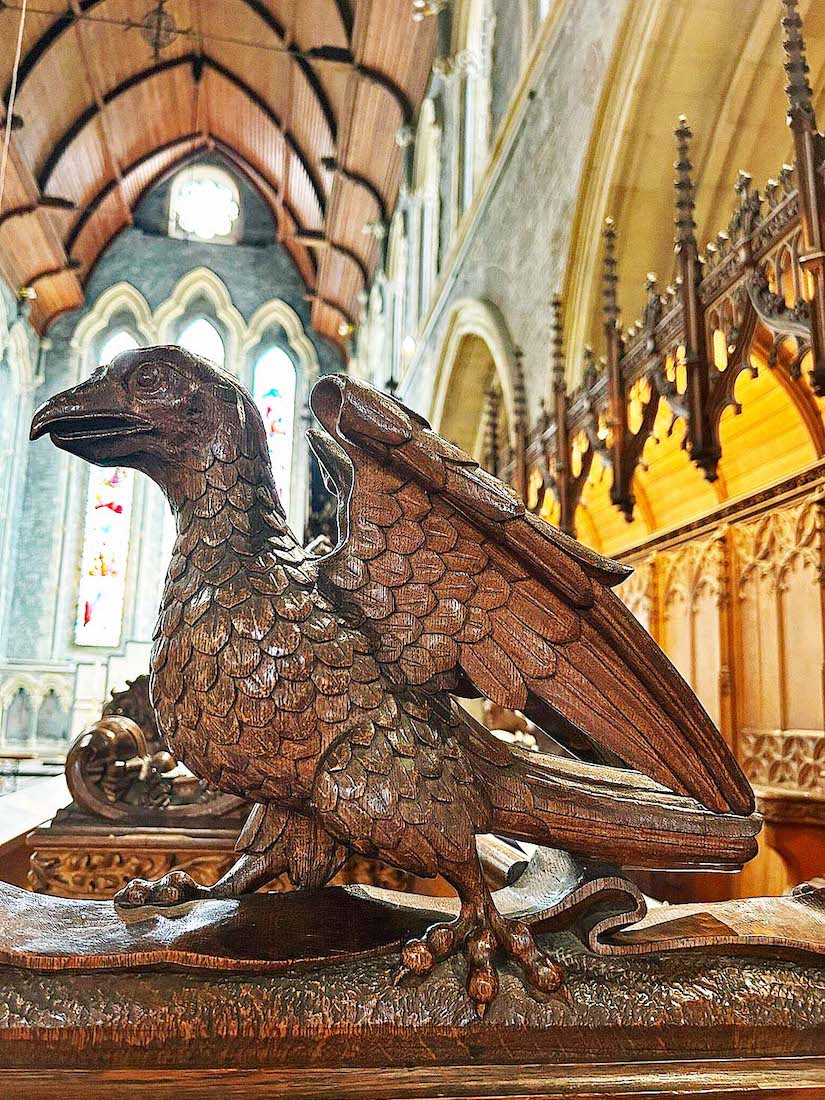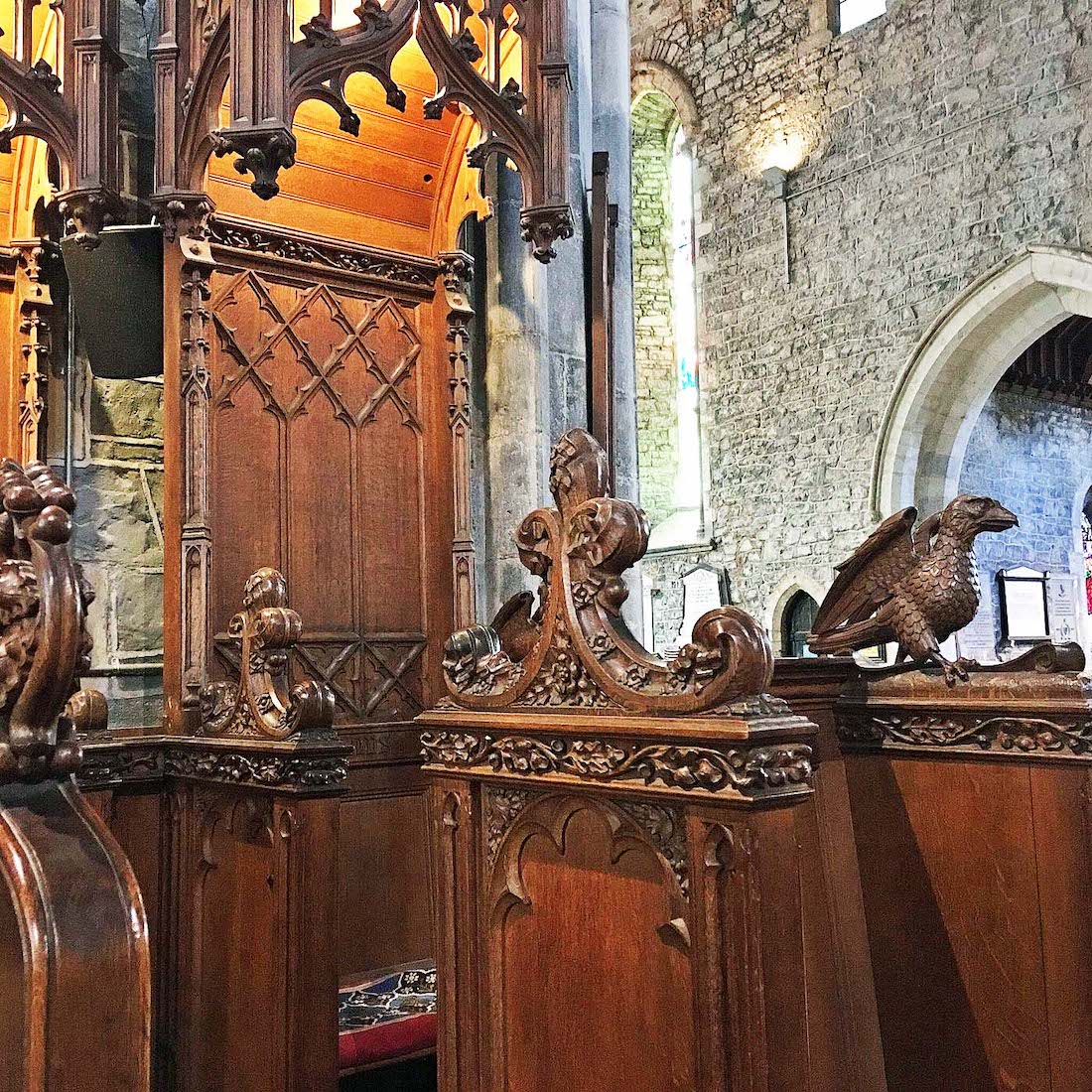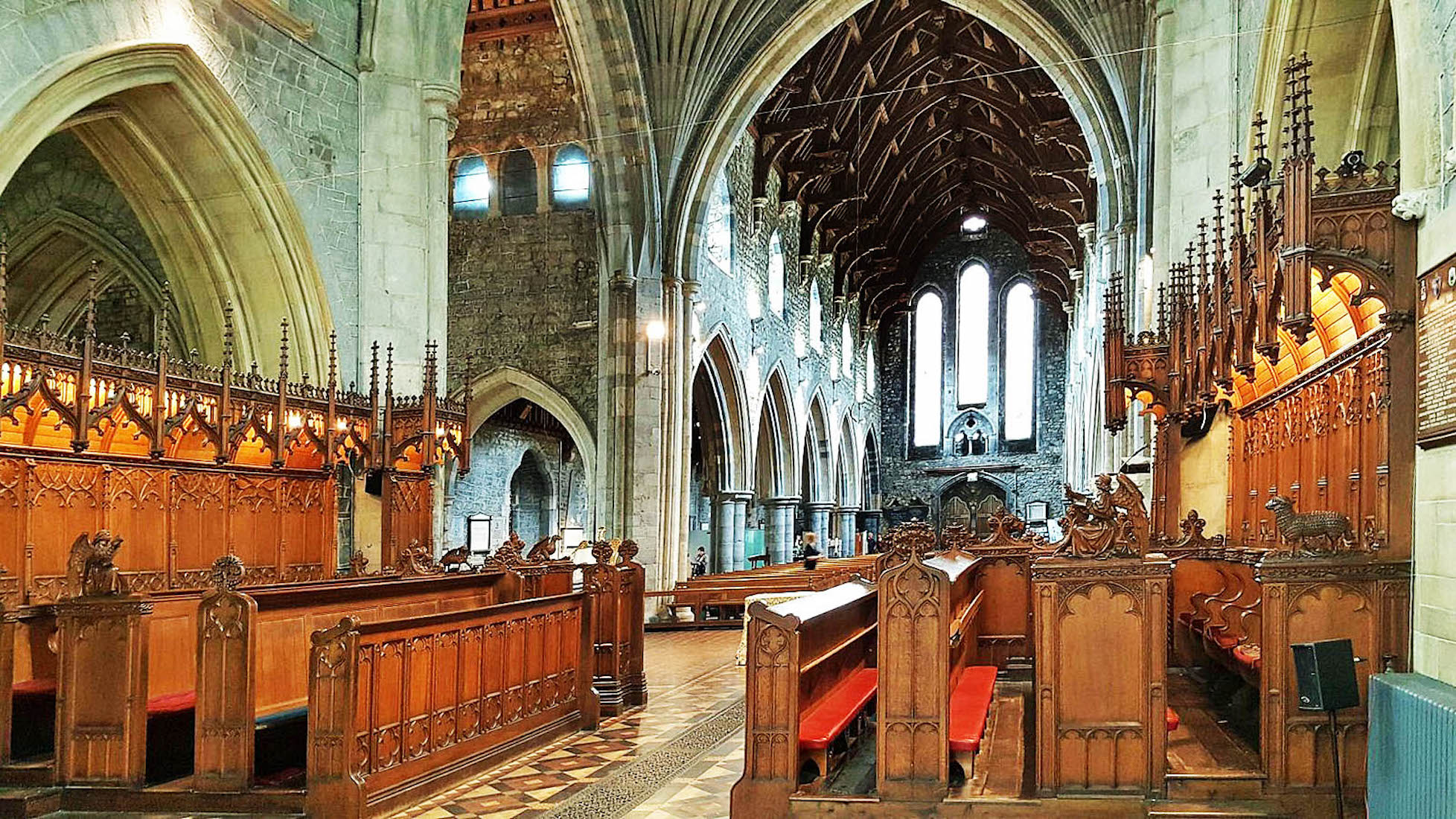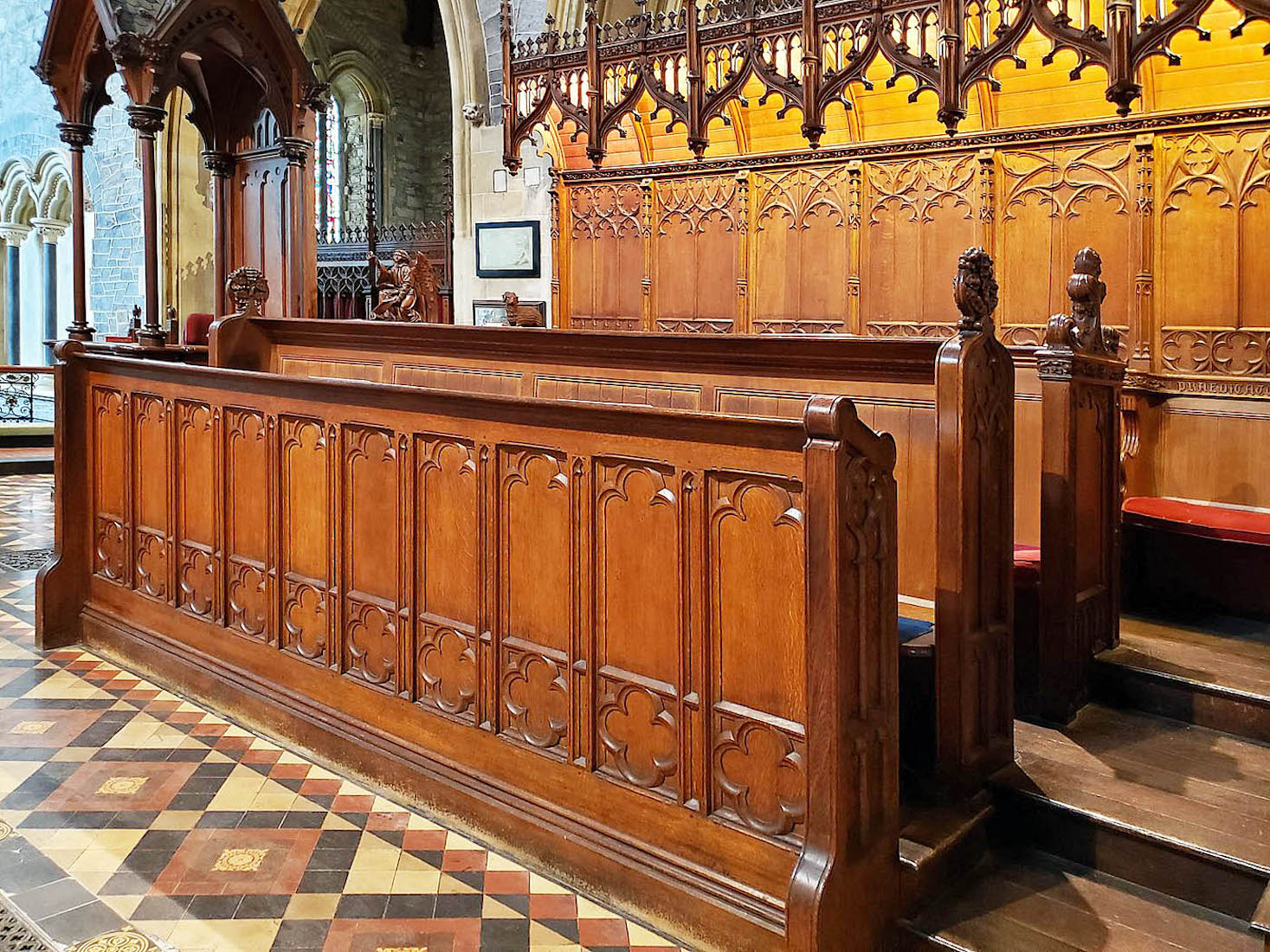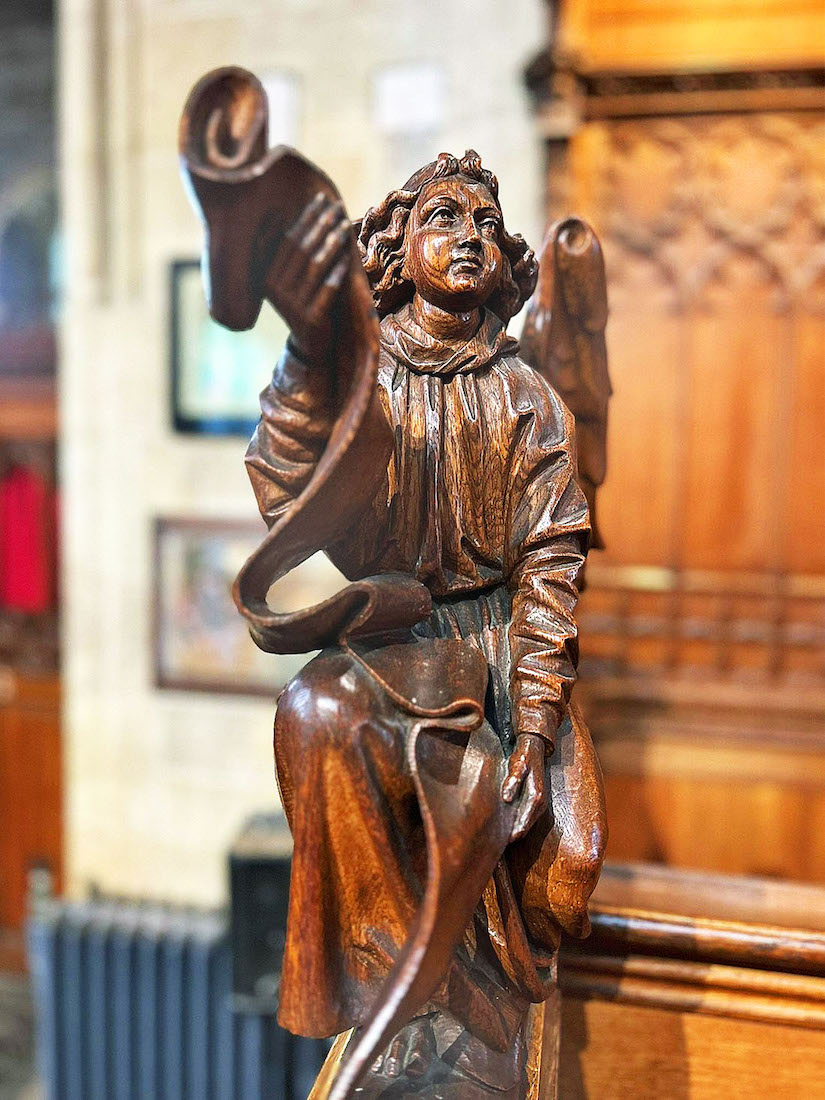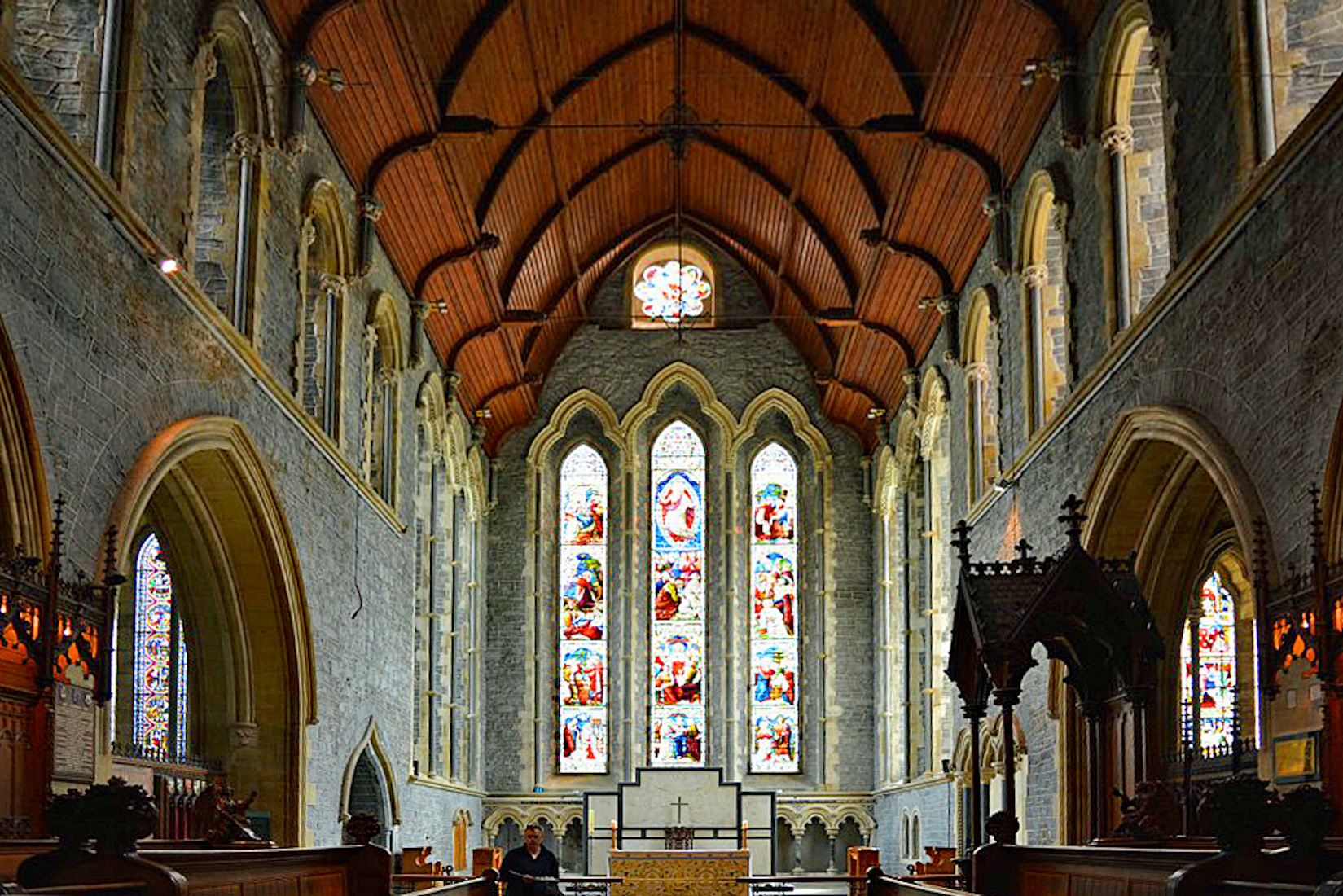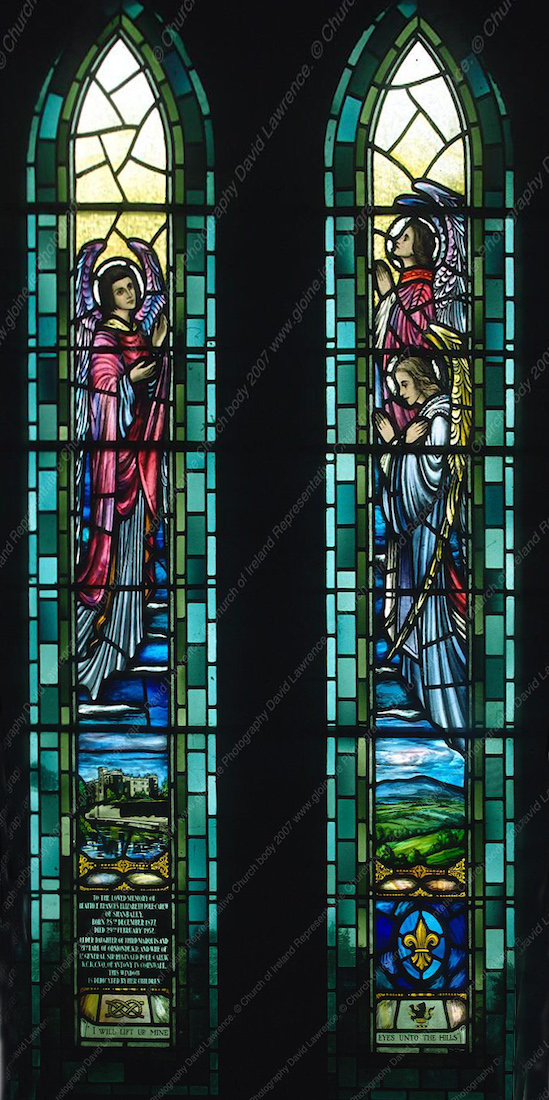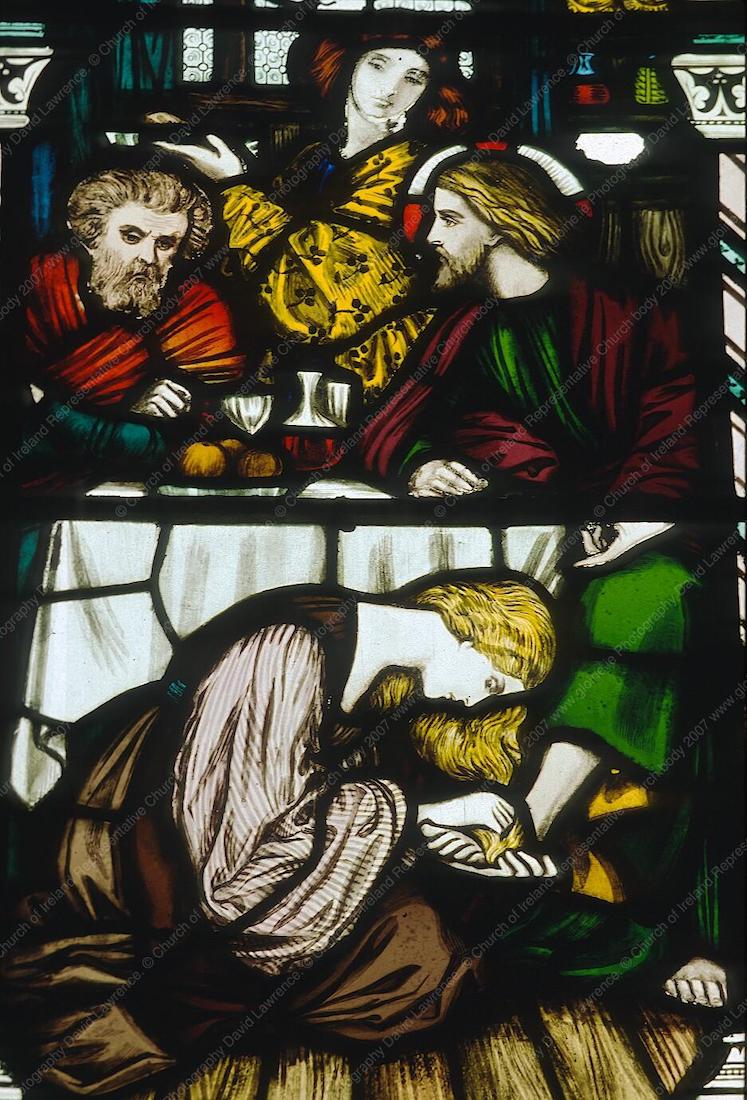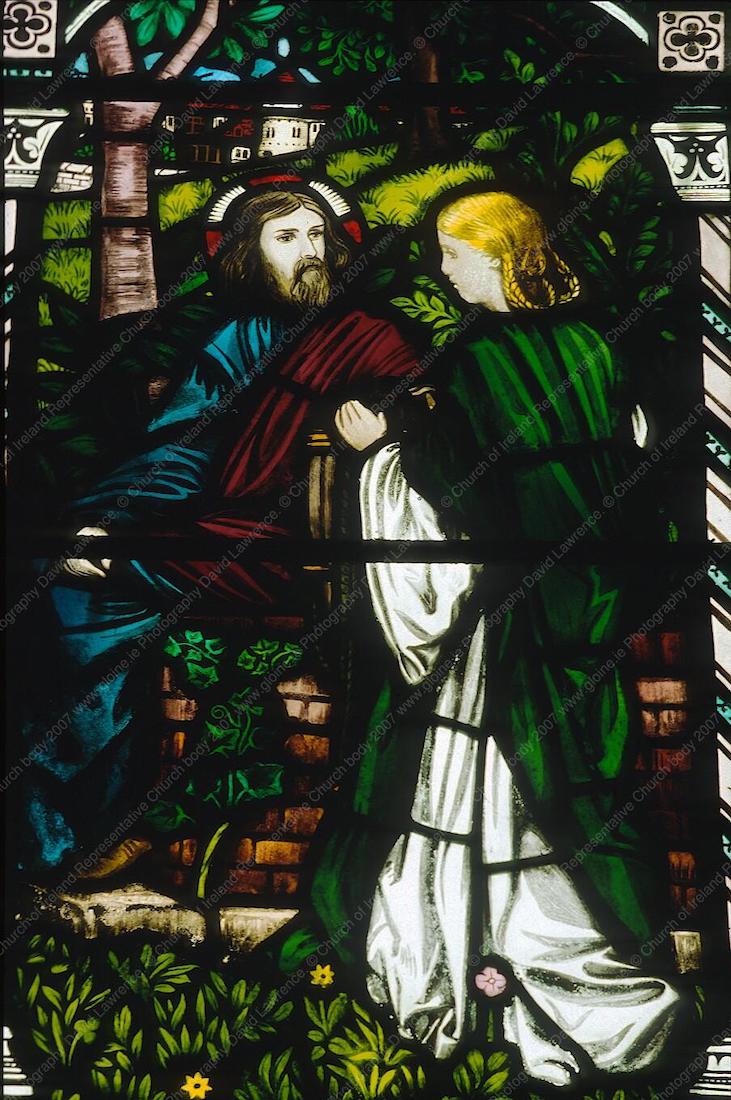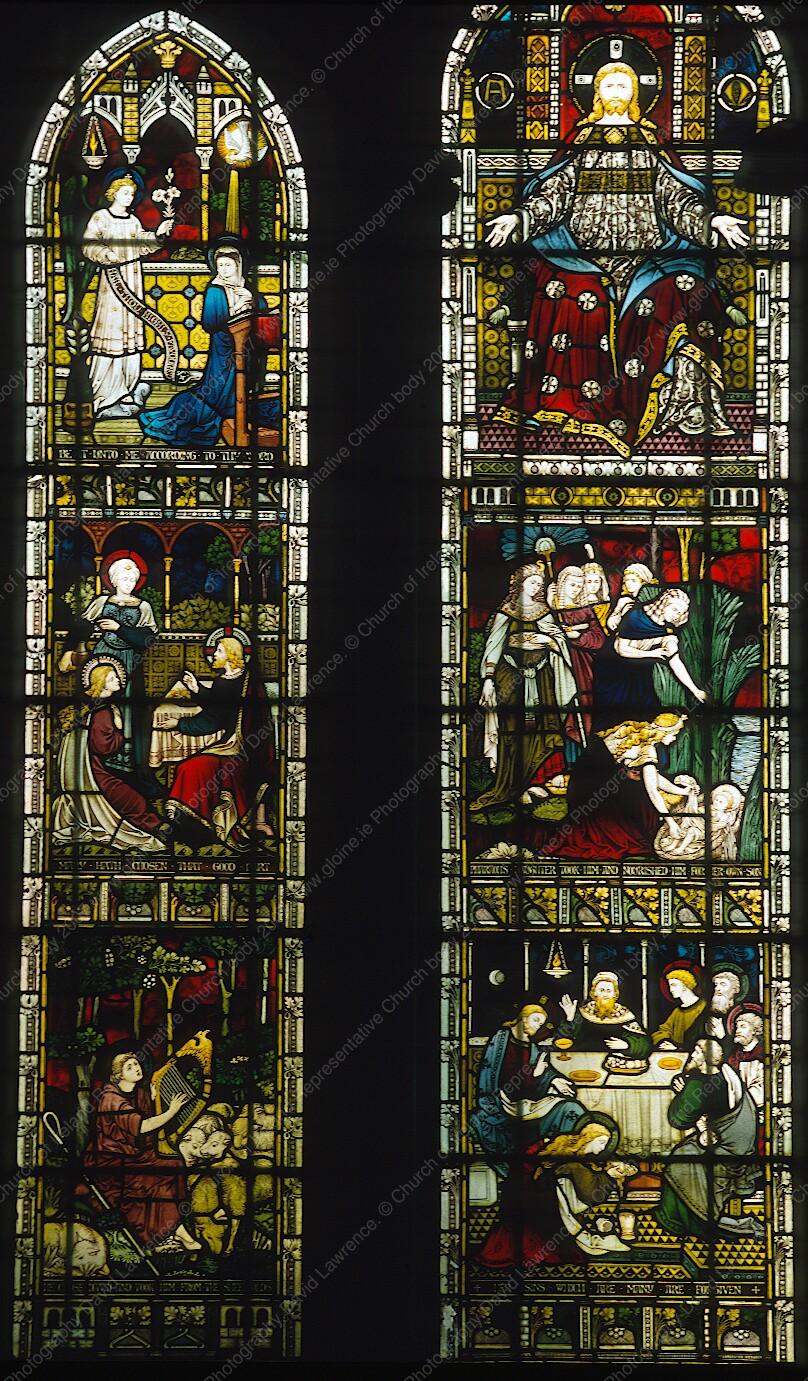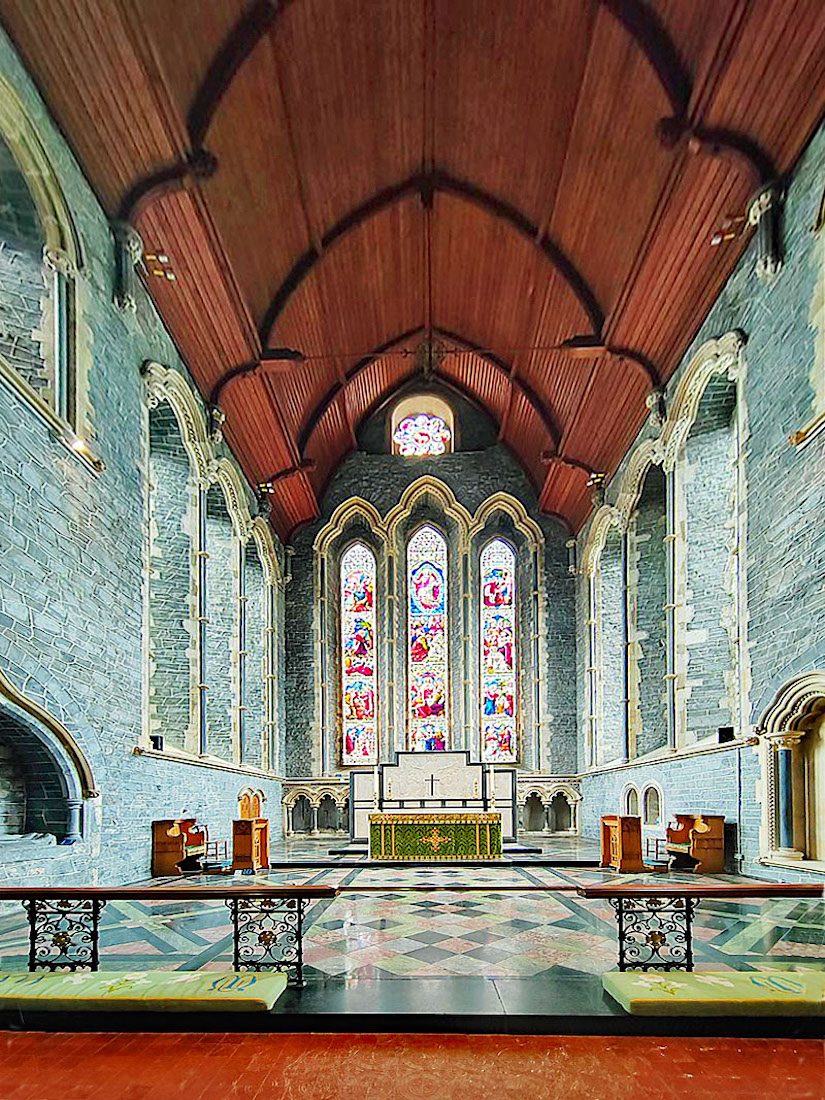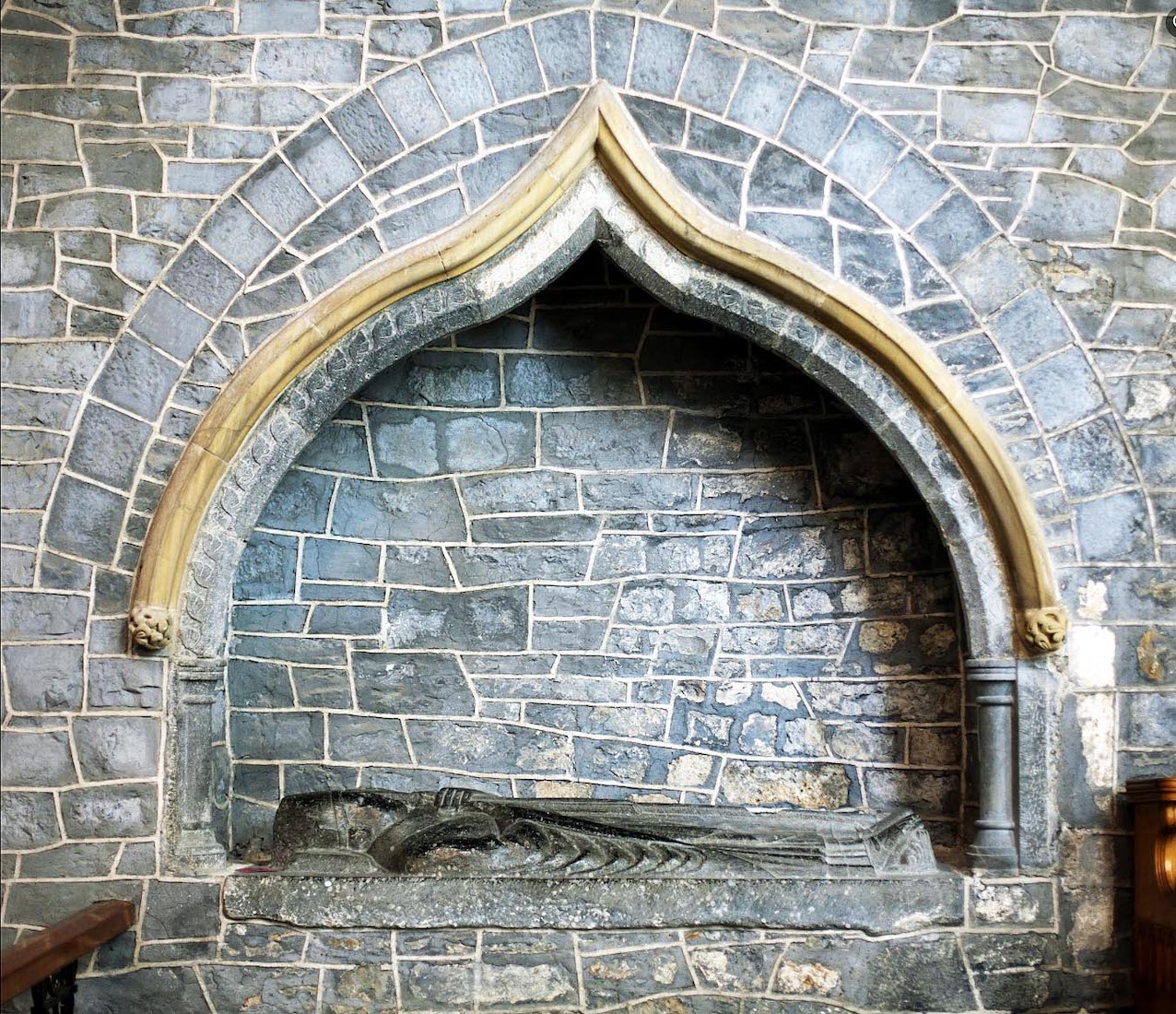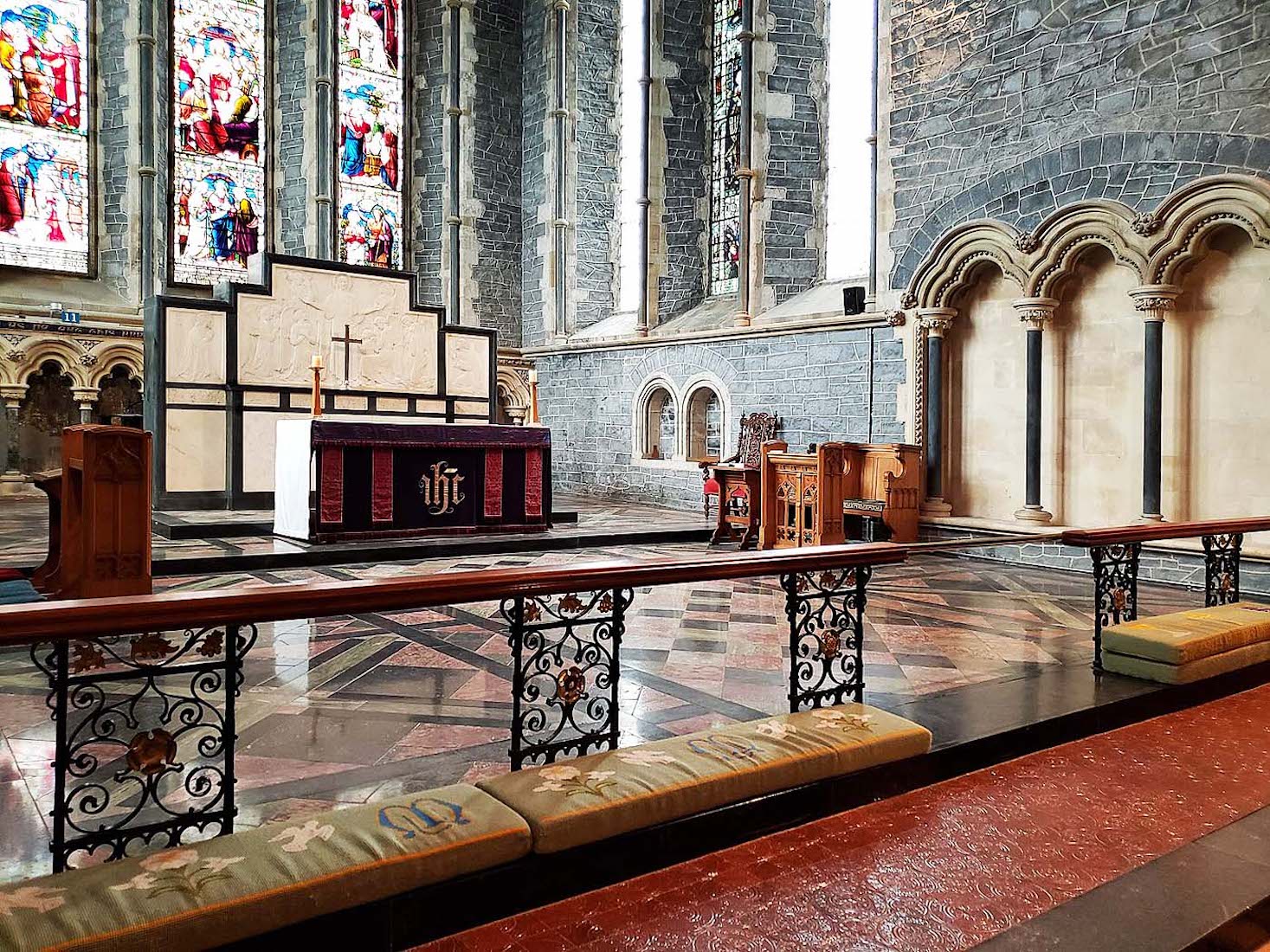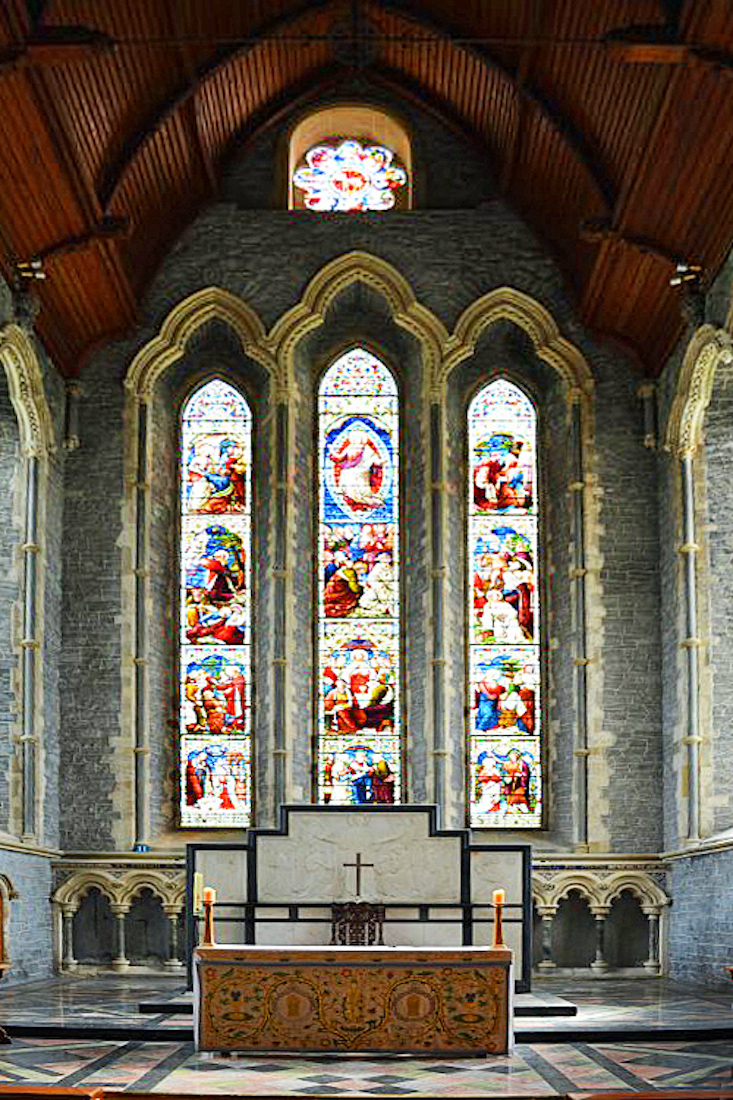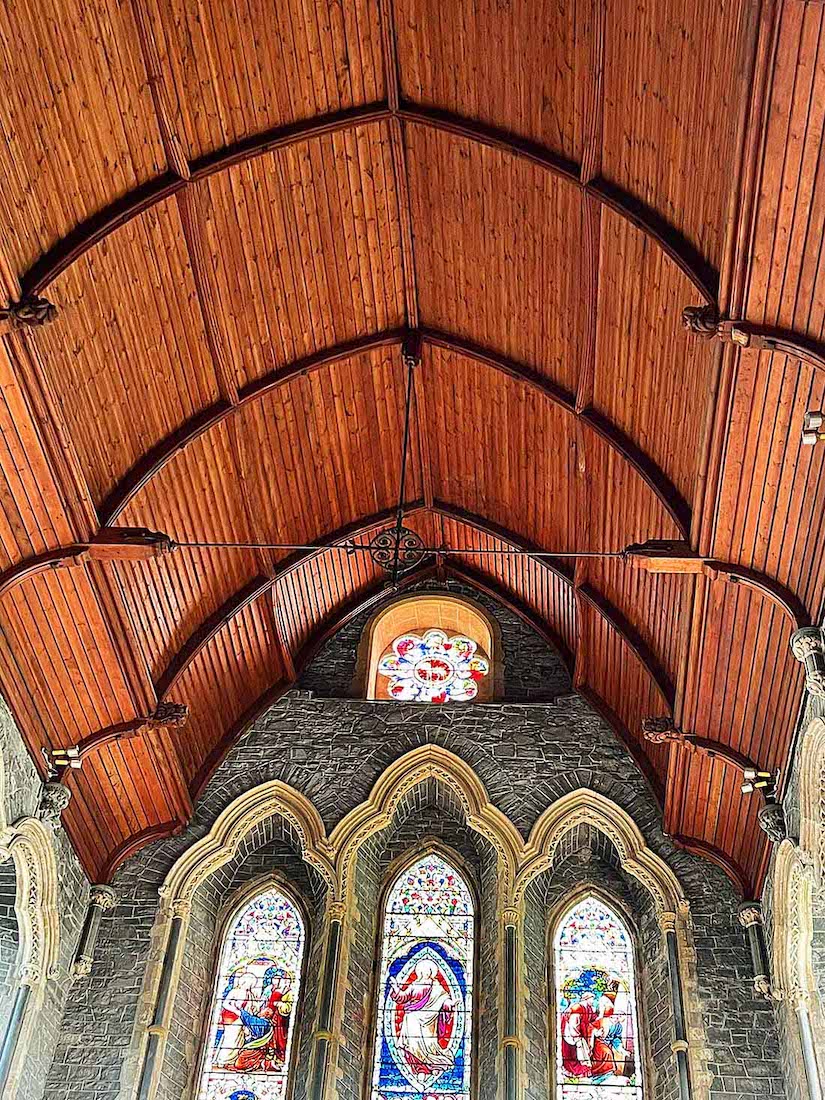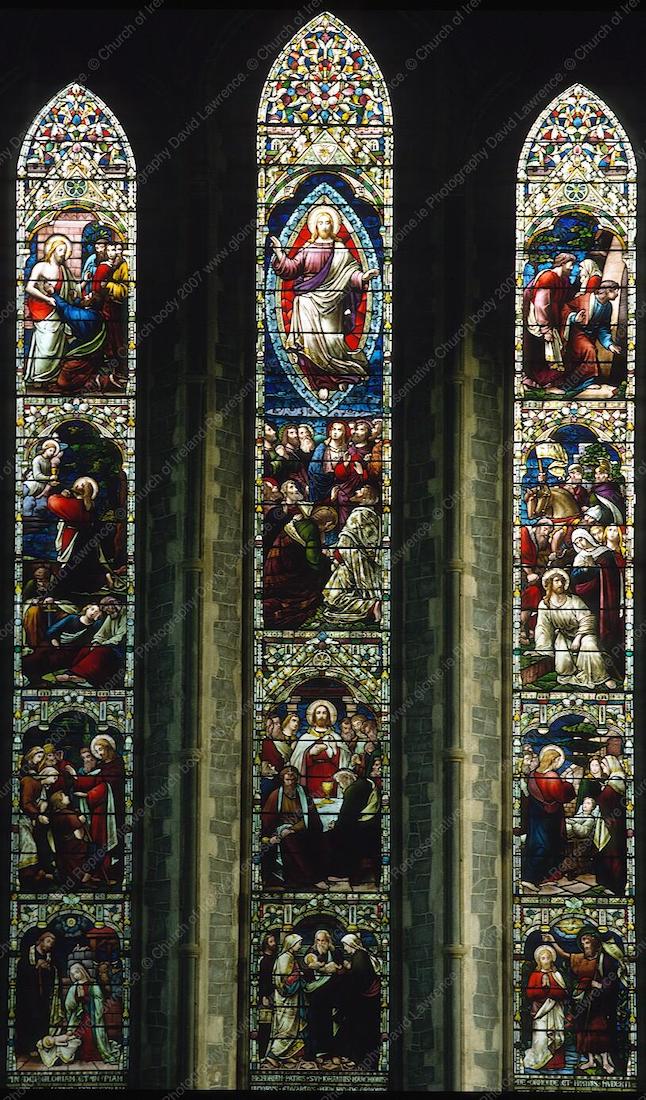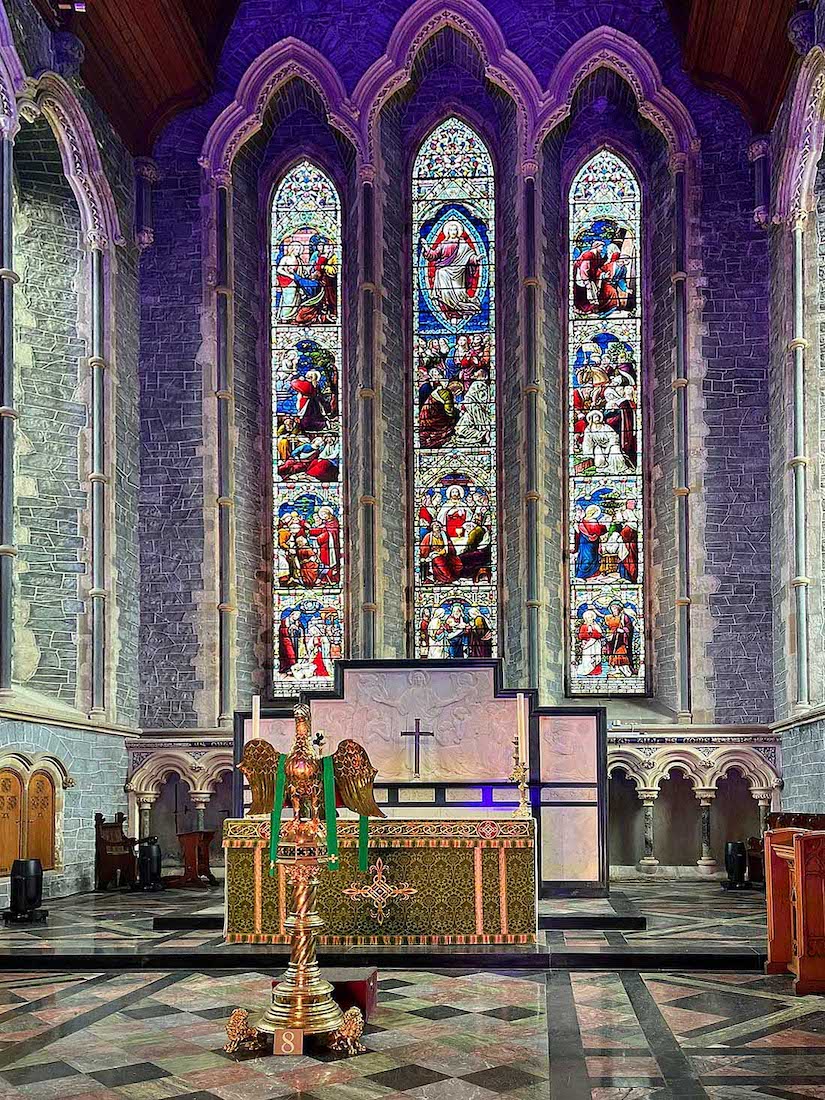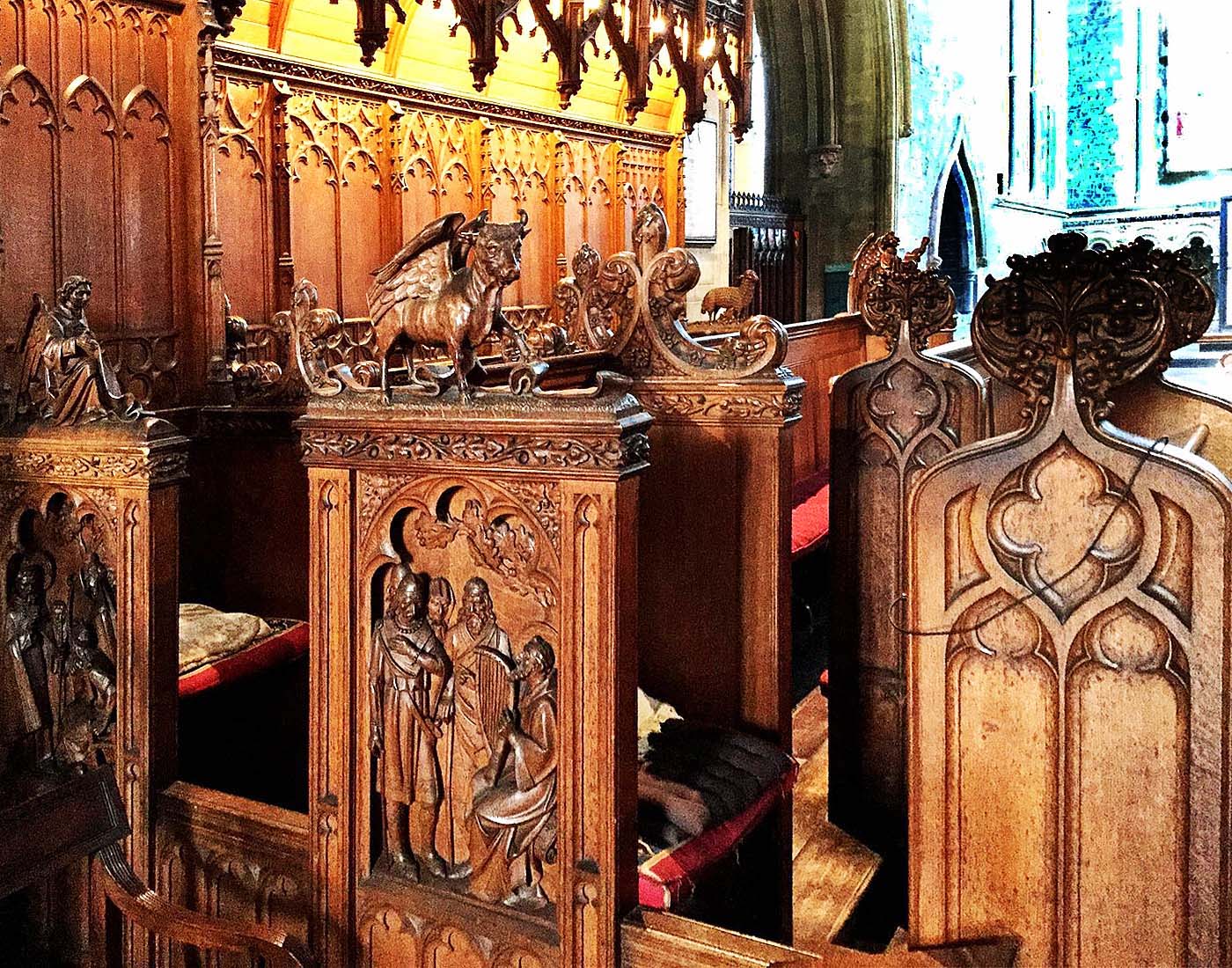
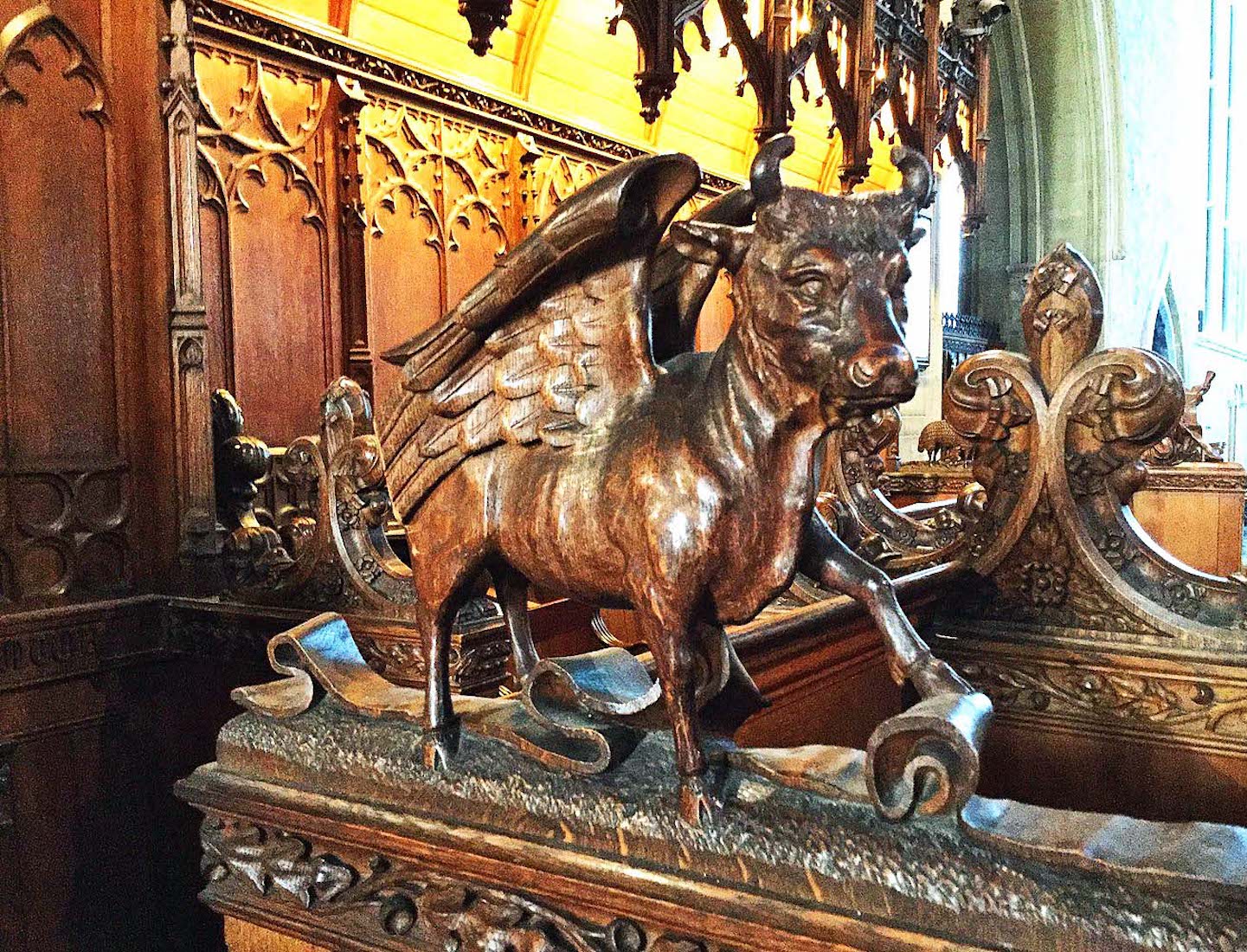
The carving on the choir stalls is quite detailed, as seen in the closer view of the North stalls. The end panel shows King David playing his harp, and above is a seated angel and the ox. At the far end we see a sheep, and there are a number of ‘poppy heads’ at the ends of the pews. Why the winged ox? There is a probably a connection with the Evangelist St Mark, for whom the winged ox is a symbol. This relates to the subject of sacrifice in his gospel, but does not explain why the carving is here. [Photos Credit: permia] INDEX
82. SOUTH CHOIR TA
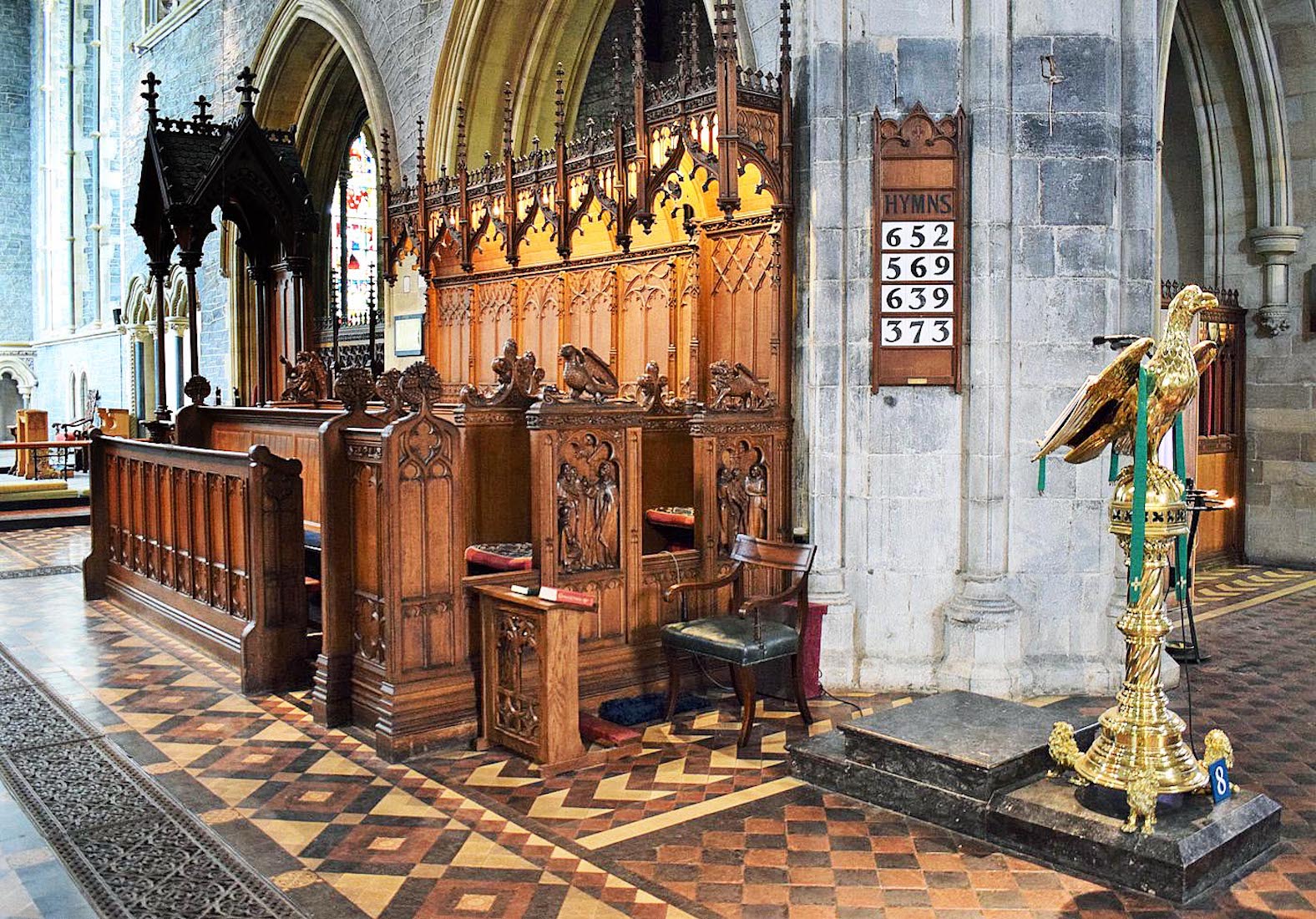
There are further carvings to be found on the South choir stalls. We have noted the eagle, and there is also an angel holding a scroll at the far end of the stalls. [Photo Credit: Jo Vandebrouck]
83. EAGLE TA
The eagle has rather a mean look! The eagle is the symbol for St John the Evangelist. These symbols for the four Evangelists originate from ‘the four living creatures’ in Ezekiel 1. [Photo Credit: 893verenog]
84. DEAN’S STALL TA
Close to the eagle is a high backed canopied chair which would be the Dean’s chair. [Photo Credit: Beth M]
85. VIEW OF CHOIR LOOKING WEST TA
A different view of the carvings on the choir stalls is obtained by viewing them from the altar side. The sheep is at far right. The choir stalls in St Canice’s Cathedral are over 120 years old. They were installed in 1901, and carved from Danubian oak. They were inspired by the medieval choir stalls of Bruges Cathedral dating from 1450. [Photo Credit: Oliver H]
86. SHEEP TA
It is interesting that sheep and shepherd feature so prominently in the teaching of Jesus, as being a shepherd was regarded as a lowly occupation. [Photo Credit: Oscar L]
87. ANGEL WITH SCROLL TA TA
At the altar end of the South choir stalls is an interesting carved angel holding a scroll. Behind this is the entry to the robing room (often closed), and next is the large cathedra. Many church stained glass windows feature angels holding scrolls, often with texts of praise or worship. [Photo Credit: Melissa G] [Photo Credit: 893verenag]
88. CATHEDRA TA
This large seat is the cathedra, or bishop’s throne. The word ‘cathedra’ is Latin for seat, and it is from here that a cathedral gets its title. So, a cathedral is a church in which there is a cathedra – signifying that this is ‘the bishop’s church’. [Photo Credit: Michel_Louise_2013]
89. CHANCEL DB
We stand back near the crossing and look towards the altar. We notice there are stained glass windows to either side. To the left is the Gash Chapel, to the right the robing room. The Gash Chapel is open for private prayer, but the robing room does not have general public access. However, we are able here to appreciate the stained glass windows. [Photo Credit: ]
90. GASH CHAPEL NORTH WINDOWS Gl (x4)
The Gash Chapel is named after The Very Rev. John George Gash, Dean of Ossory, who lived from 1912 to 1980. It has windows on the North and East sides. Looking North, the Westernmost and Easternmost of the three windows each have two lancets depicting angels. They were produced by Clarke Studios, Dublin in 1952. •• The central window has two lancets and depicts Christ in the House of the Pharisee, and Christ and the Samaritan Woman at the Well. The window was produced by James Powell & Sons, London in 1868.
91. CHAPEL EAST WINDOW Gl
To the East of the Gash Chapel there is a three-lancet window, but the outer lancets have leaded lights. From bottom to top, the central lancet shows Taking in the stranger, Visiting the prisoner, Giving Drink to the Thirsty, Feeding the Hungry, Clothing the Naked, Burying the Dead, and Visiting the Sick. This window dates from 1871, and was the work of Lavers Barraud & Westlake, London.
92. ROBING ROOM WINDOW Gl Gl
The Robing Room has a three lancet window facing East, shown above. There is a also a South facing lancet, but this is filled with diagonal lattice glass. The East windows date from 1876 and are by Clayton & Bell, London. They show (bottom to top, left to right): David, Christ with Mary and Martha, Annunciation; Christ in the House of Simon the Pharisee, Moses in the Bulrushes, Our Lord Enthroned; Christ Blessing the Children, Jacob and Esau, Stoning of Stephen.
93. SANCTUARY Wiki TIP
We come finally to the sanctuary, separated from the choir by a kneeling rail. At left there is a wall niche containing the effigy of Bishop Richard de Ledrede (Richard Ledrede) who died in 1360. Richard Ledred, was a 14th-century churchman in Ireland who served as Bishop of Ossory. His long tenure as Bishop was marked by bitter controversies and repeated quarrels with his colleagues, both lay and clerical. [Photo Credit: Twasonasummersmorn] [Photo Credit: The Irish Place]
94. ANOTHER VIEW TA
This is an interesting view across the sanctuary. At top left is the main East window – we will return to that. There is also a window in the South wall: it has three lights, but only the central one contais stained glass. In the far wall there are a pair of small niches, useful for standing Eucharistic items for example. To the right are three much larger niches which were probably originally designed for seating – the so called sedilia. The altar area is beautifully paved in marble from the four provinces of Ireland. The famous black marble represents Leinster, the green Connemara marble is for Connacht, the vivid red marble from Cork denotes Munster, while Armagh’s grey marble stands for Ulster. [Photo Credit: Melissa G]
95. SANCTUARY ROOF DB TA
The roof of the sanctuary is attractive. It picks up the structural themes of the nave roof, but in a simplified way. [Photo2 Credit: Tim O]
96. SANCTUARY WINDOWS Gl Gl
Here we have the Great East Window, as well as the single stained lancet from the sanctuary South window. •• The East window dates from 1875 and is the work of William Holland, Warwick. From bottom to top, left to right, the window shows: Nativity, Christ Healing the Blind Man, Agony in the Garden, Risen Christ Appears to the Eleven Disciples; Presentation in the Temple, Last Supper, Ascension; Baptism of Christ, Raising of the Widow’s Son at Nain, Road to Golgotha, Empty Tomb. •• The stained glass lancet at right dates from 1902 and was produced by Shrigley & Hunt, Lancaster. From bottom it shows St John and St Peter at the Tomb, St Peter, St John.
97. PARTING VIEW TA
In our final view of the altar, we notice the aumbry in the wall at left, and the white reredos. behind the altar. The reredos appears to show the Risen Christ surrounded by worshipping angels, but the design suffers from lack of definition. [Photo Credit: Victoria F]
This completes our tour of St Canice’s Cathedral in Kilkenny.
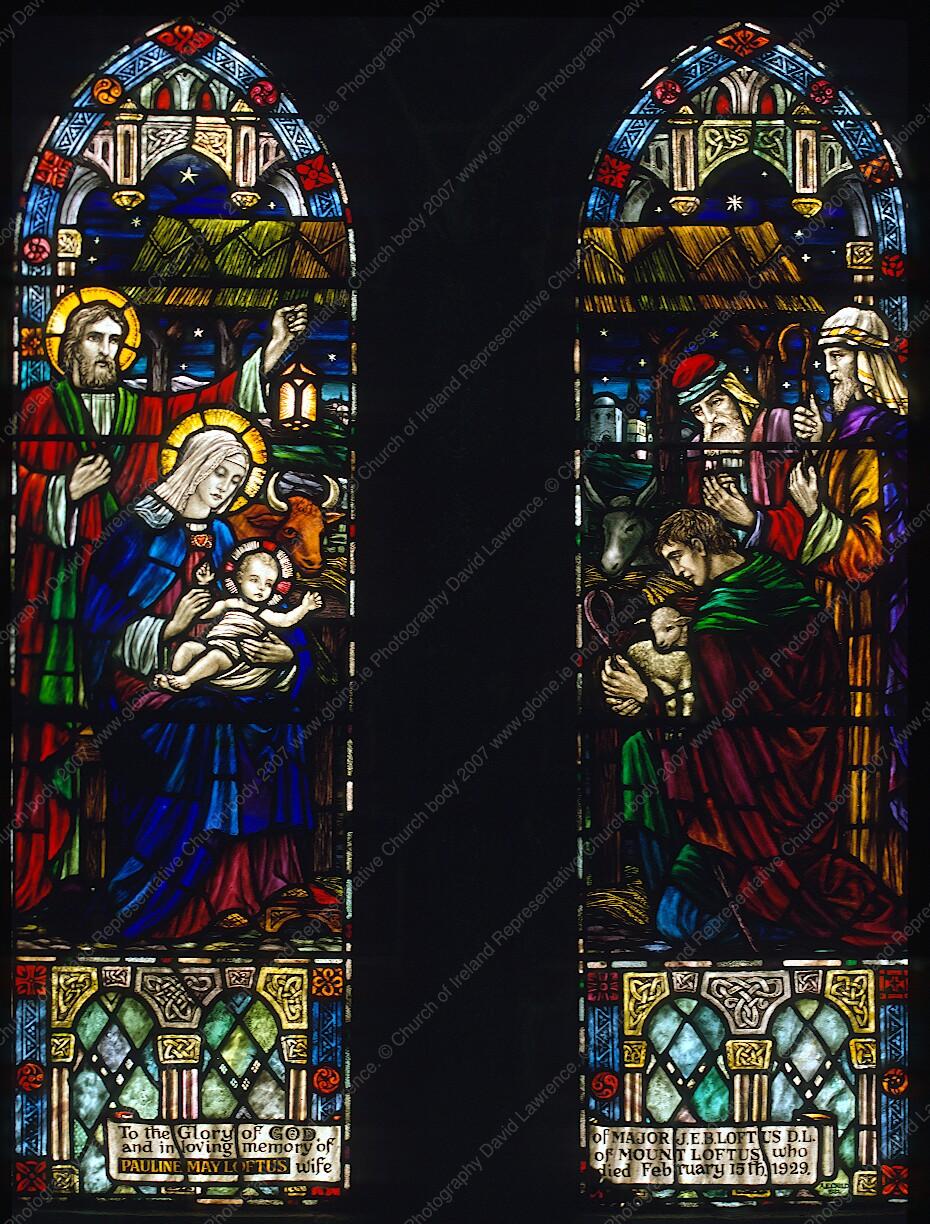
CONCLUSION Gl
I hope you have enjoyed visiting St Canice’s Cathedral in Kilkenny with me. Every cathedral has its own special points of interest, and this cathedral has many unexpected features.
I have never been to Kilkenny, so take no credit for the photos on this site which come from a wide variety of sources. Where there are only one or two photographs from a given source, these are acknowledged in the text. Where there are multiple contributions, these are acknowledged by initials in the text, and in more detail here as follows:
Gl : Gloine. These are most of the window photos, and are found on the gloine site: https://www.gloine.ie/search/window/14370/W01 This is an excellent resource.
TA : Photos found on the Trip Advisor site. An enormous number of photos of St Canice’s are listed on this site.
GSV : Google Street View. Google Maps takes us around the outside of St Canice’s. There are also interior photos. These photos are taken from here.
DB : Doc Brown This is a curious site, originally designed to help students studying chemistry! Every now and then we find a great set of cathedral photos.
MI : Megalithic ireland has much information about the tombs and grave slabs in the Cathedral.
SC: St Canice’s Cathedral. These are photos from the Gallery of the Cathedral site.
It has simply not been possible for me to get permission for the use of all these photos, but I am hopeful that photographers will be happy to have their photos contributing to the enjoyment of others in visiting this Cathedral online. If there is any issue, please contact me at the email address below.
I take little credit for the text which comes from a variety of different sources, including Wikipedia. I also express my thanks to my wife Margie who dutifully reads through all my websites and checks the typing.
I would be glad to receive any comments, criticisms or corrections to this site. The best websites are those which contain no errors!
Kilkenny Cathedral has its own website:
https://www.stcanicescathedral.ie
Site created 03 / 2025
Paul Scott

